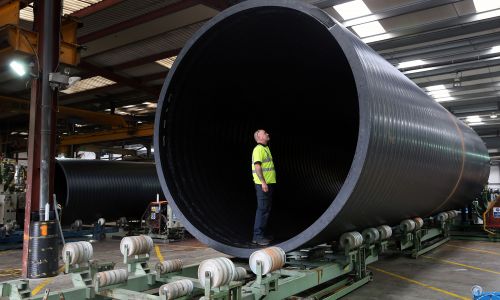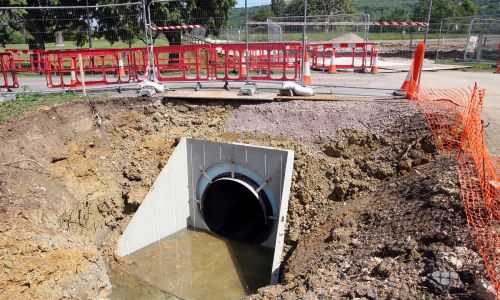30th June 2017
The UK's worst flooding disasters
Disaster: 2007 Hull floods This summer marks 10 years since more than 9,000 homes and businesses were destroyed after the city of Hull received a sixth of its annual rainfall in just 12 hours. The disaster affected an estimated 35,000 people and caused an estimated £41m worth of damage. More than 6,000 people in Hull were forced into temporary accommodation and many of those spent over a year out of their homes while some 1,400 people had to live in caravans until their homes were repaired.
The flooding resulted in the loss of one life when 28-year-old Michael Barnett entered a drain to clear debris and caught his leg in a grille.
Solution: Hull City Council commissioned an Independent Review Body to examine the key factors that lead to the flooding and make recommendations for improvements to the city’s flood prevention measures.
Significant issues were found with the pumping and drainage infrastructure in Hull and the report urged Yorkshire Water, Hull City Council and the Environment Agency to work together to account for possible climate change and development, rather than developing flood defences to the minimum standard. The council has since diverted £18 million from a home improvement programme for use in repairing flood-damaged homes and a Flood Hardship Fund has been launched.
Disaster: 1928 London floods On 7 January 1928 fourteen people were drowned in London and thousands were made homeless when flood waters poured over the top of the Thames Embankment and part of the Chelsea Embankment collapsed. The flooding was said to have been caused by unusually high levels of snowfall at the Thames’ source in the Cotswolds, followed by a quick thaw and unusually heavy rain, which sent vast quantities of water towards London, which then met a high spring tide and storm surge caused by cyclones in the north sea. The combination of these factors resulted in the highest water levels ever recorded in the Thames, peaking at 5.5 metres above the datum line and resulting in extensive flooding throughout the City and Southwark, up to Putney and Hammersmith, and down to Woolwich and Greenwich.
Solution: The 1928 flood was the last major flood to affect central London and led to the implementation of new flood control measures which culminated in the construction of the Thames Barrier in the 1980s. The Barrier (which would cost £1.6 billion at today’s prices) is a movable flood prevention mechanism that prevents the floodplains of all but the easternmost boroughs of Greater London from being flooded by exceptionally high tides and storm surges from the North Sea.
Disaster: The Boscastle floods On Monday August 16th 2004, exceptional rainfall over an eight-hour period caused the worst flooding in local memory at Boscastle in Cornwall. In fact, a study commissioned by the Environment Agency found that it was among the most extreme flooding ever experienced in Britain. Torrential rain led to a two-meter rise in river levels in just one hour. A three-meter wave was triggered by water pooling behind debris caught under a bridge. When the bridge collapsed under the pressure, the wave surged down the main road at speeds of more than 10 mph.
The flooding caused an estimated £15 million of damage to the town. In total, 75 cars, five caravans, six buildings and several boats were washed into the sea, and around 100 homes and businesses were destroyed. Fortunately, there was no loss of life but a rescue operation saw a fleet of Westland Sea King helicopters rescue about 150 people clinging to trees and the roofs of buildings and cars.
Solution: The Environment Agency commissioned a report investigating the need for further flood risk measures and concluded that the River Jordan, which runs through Boscastle, needed to be lowered and widened by extracting rocks from the riverbed to increase the ability of the channel to carry high flows. The organisation also looked at the culverts around the village and put in place plans to change them all to more modern drainage. Disaster: South East flooding Before 1900, flooding in areas like Oxford in South East England was frequent, due to the fact that the locks were built not to let down the water but to keep it back. This resulted in the flood plains nearly always flooding following periods of heavy rain. The flood plains often remained permanently flooded throughout the winter, and often froze over, making it possible to ice-skate across the fields surrounding Oxford.
And the problem has persisted into the twentieth century. The South East has frequently fallen prey to bad flooding, with torrential rain in June 2007 resulting in many UK rivers bursting their banks, including the Thames, the Cherwell in Oxford, and the Ock in Abingdon. Some 3,000 homes were flooded and 600 residents were evacuated.
Solution: Following the 2007 floods, the UK Government announced it would increase the spending on risk management and flood defences by £200 million to £800 million
In April 2010 the Flood and Water Management Act 2010 was passed, giving more power and responsibility to the Environment Agency and local authorities to plan flood defences co-ordinated across catchment areas and the wider country. This counteracted the tendency for defences to be built for upstream areas without much thought for how this might be making flooding worse for downstream areas.
Disaster: The Somerset Levels Over Christmas 2013, South West England was battered by storms, with heavy rain and high winds resulting in widespread disruption including major road closures, power outages, and the submersion of thousands of acres of the Somerset Levels. The relentless bad weather lead to rising flood waters that eventually triggered a large-scale response, with organisations including the fire service, the RSPCA, and even the military providing support. At the time, the government faced criticism for not dredging the rivers quickly enough, leaving residents in a dire situation for weeks on end. Solution: Throughout January and February, the Environment Agency embarked on what it called its “biggest pumping operation ever” on the Somerset Levels, importing 13 high-capacity pumps from the Netherlands in an attempt to remove 7.3 million tonnes of water each day from the levels. Following the disaster, a £100 million 20 year plan to protect levels from was presented to the government, recommending dredging, a tidal barrage, and more permanent pumping sites.




